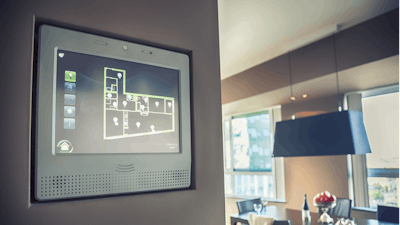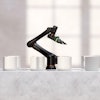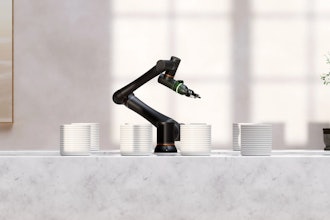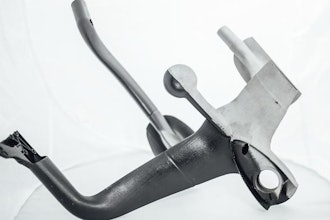
Looking back over the statistics presented in recent years, we can see that 2019 is set to be a pivotal year in the readiness of Internet of Things (IoT) devices and networks. In 2016, Gartner expected we’d see 20 billion internet-connected devices by 2020, while IHS Markit put the estimate at closer to 30 billion by 2020.
Alongside this, a previous report by Cisco expected that four of the seven billion people on Earth would have internet access in 2020, meaning as many as 7.5 times more ‘things’ than people could be connected to the internet in 12 months’ time.
Regardless of which of these figures are the most accurate, they all evidence the popularity of IoT technology around the world. With this growth comes a shift in the industry itself, introducing several issues that threaten to derail the growth of the IoT. We will see these shifts begin to take shape in the coming year.
Costs, Competition and Convenience
With IoT as with all technology, the cost of manufacturing devices, sensors and systems declines as the technology becomes more mature. These declining costs mean that we may see more companies venturing into the industry, as the lower production costs lower the barrier for entry into the market. This means increased competition for existing manufacturers, driving an increased need for performance quality and innovation to stand apart from low-cost competitors.
One of the most effective ways for manufacturers to show that their products perform is to emphasis how their IoT device offers either more functionality or convenience than competing products. For devices such as smart lights, this could mean a greater range of hues to bathe a room in. But given that some of the leading smart lights on the market already offer more than 16 million colours, it will arguably be easier to demonstrate greater convenience.
The unique challenge posed by IoT devices and sensors, particularly those that are designed to operate independently to mains electricity, is the frequency at which they pulse to communicate wirelessly with other devices on local networks. It is of paramount importance that all nodes have sufficient power to deal with the infrequent, high-frequency bursts of energy.
In terms of innovation, declining costs for manufacturers open the possibility for new types of smart devices, leveraging the lower cost of technology to make new applications more commercially viable.
Previously, IoT devices have communicated with other networked devices using a relatively small number of core communications technologies. Generally, the most common communications protocols used by devices are IP, Bluetooth, Z-Wave, Zigbee and WiFi.
Each has its own strengths and weaknesses, so there is no established standard protocol. WiFi is more energy intensive than Bluetooth, but Bluetooth is more limited in terms of signal range and network size. Zigbee boasts a faster rate of data transmission than Z-Wave, but the latter supports better interoperability. Generally, the main considerations when determining which communications protocol to use are the range between networked devices, the speed of data transmission, the energy intensity of operation and the interoperability of the network.
The current push among telecommunications providers is to offer a communication technology that provides an effective middle ground between all these protocols. At the time of writing, much of the industry is eagerly awaiting wide roll out of 5G to provide ample bandwidth and data transmission speeds to support IoT devices, while more recent protocols such as Category M1 (Cat-M1) are slowly being integrated into modules for IoT devices.
While the industry continues to progress towards one communications protocol to unify devices, design engineers must consider how the different communication technologies affect overall device performance. This goes beyond considering the range at which devices should operate and the speed of transmission, and involves engineers looking at how each technology influences energy usage.
It’s generally accepted that Zigbee and Z-wave are the two most energy efficient communications protocols for IoT devices. So, these technologies boast a clear benefit for most battery-powered IoT applications, allowing devices to remain functional for longer. However, design engineers do not need to be restricted to these protocols exclusively, so long as they invest in the right battery technology.
Battery Advancements
Research conducted by Accutronics’ parent company, US-based IoT battery manufacturer Ultralife Corporation, identified that most first-generation battery-powered sensors use CR123A batteries. This isn’t too surprising, as these batteries are well suited to IoT applications, boasting a lightweight and compact design and high voltage capacities.
But simply choosing a CR123A doesn’t necessarily spell success for an IoT device manufacturer. To provide the longest service life, reliability and convenience, the batteries should have a high energy capacity, minimal self-discharge rate and a gentle voltage curve over its life. The latter is crucial in ensuring consistent performance, and it’s a common characteristic of lithium chemistry batteries.
This is why Ultralife Corporation recently launched a range of CR123A batteries to deliver long-life and effective performance to IoT applications. Drawing on the company’s battery industry expertise and reputation for developing long-lasting batteries, the new UB123A range uses a lithium manganese dioxide battery chemistry to ensure a gentle voltage curve and enduring performance.
Not only is this battery designed to meet the current demands of the IoT industry, but it is well-positioned to serve IoT manufacturers into the future. As the number of devices significantly increases, the lifespan and convenience of the system will become a key differentiator, and it’s one that battery technology directly underpins. The consistent performance and high energy density also permit design engineers more flexibility in experimenting with the communications protocol of devices without significantly impacting device longevity.
As the IoT device market continues through a period of rapid growth and development, IoT manufacturers and design engineers should shift their attitudes towards batteries and power supplies. Although they remain the backbone of the device, the changing competitive landscape is making the value provided by batteries also become a key differentiator and advantage.
Michele Windsor is the global marketing manager for Accutronics, a leading battery and charger designer and manufacturer based out of the UK.






















